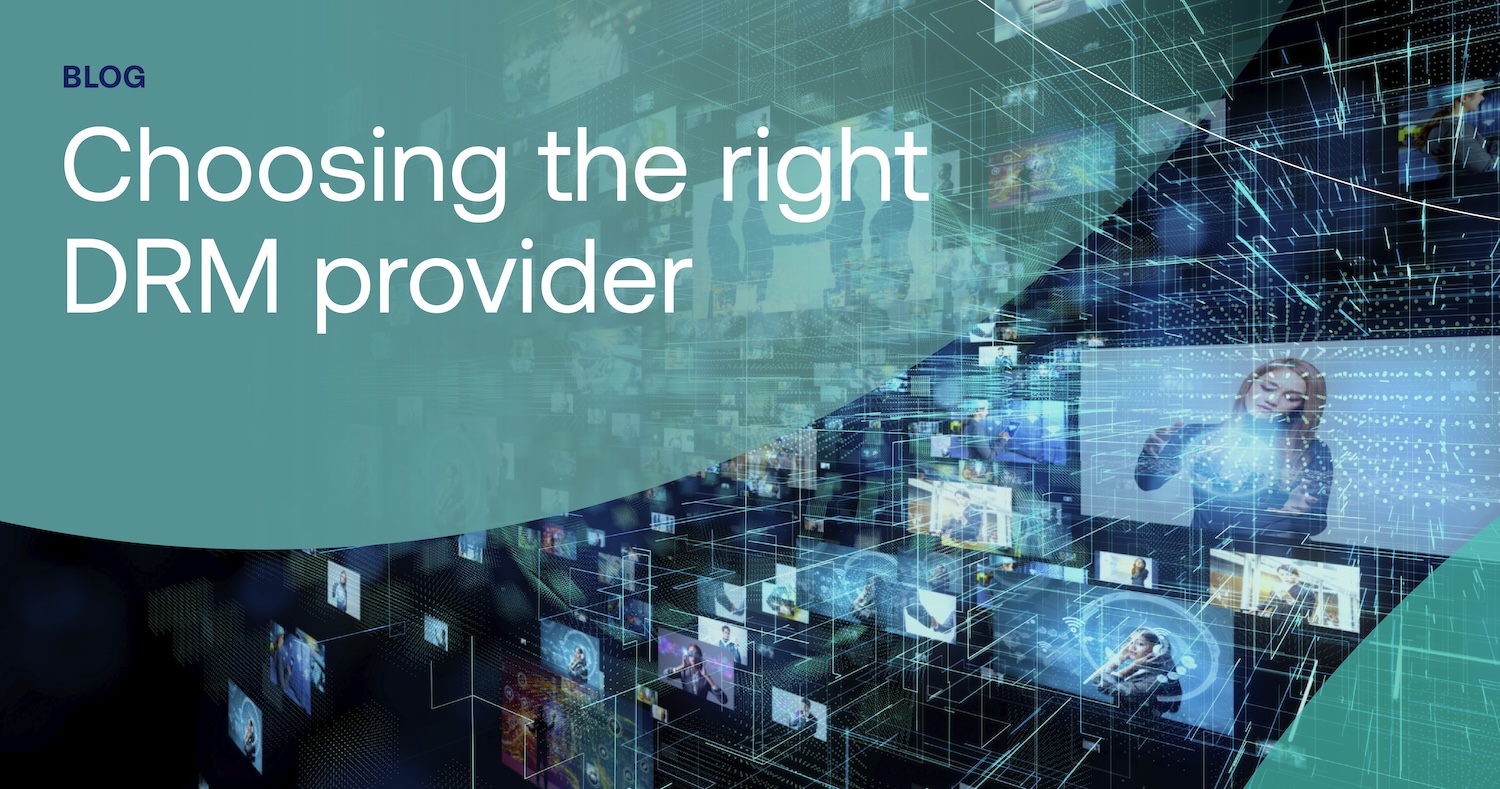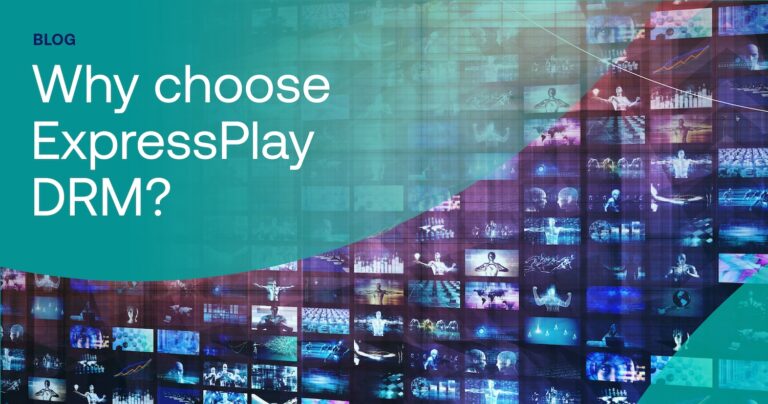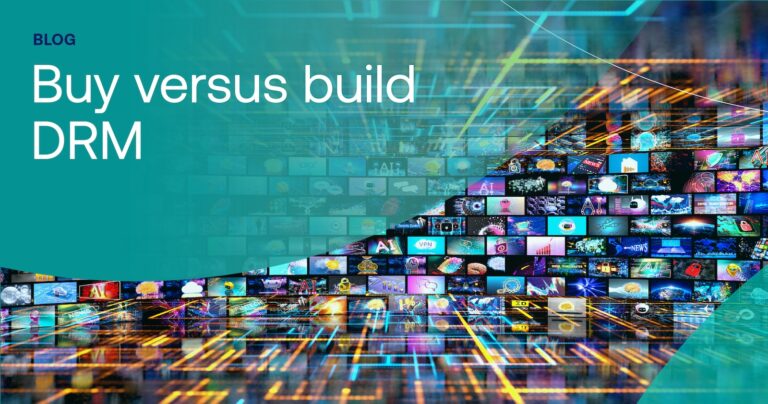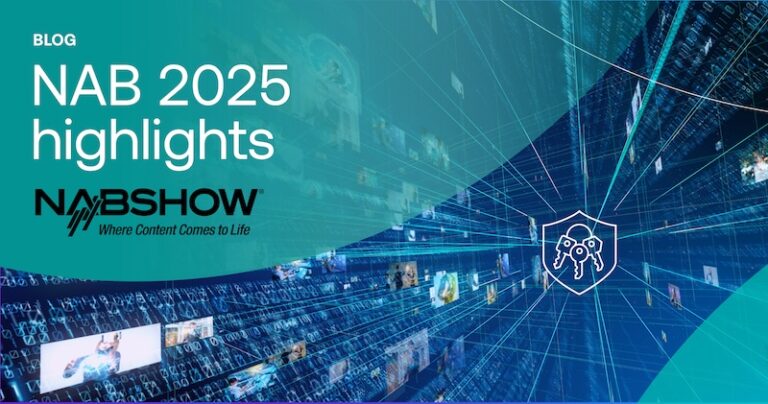Understanding the digital rights management ecosystem
Digital rights management (DRM) has evolved from a niche security tool into a cornerstone of streaming content protection, enabling creators and distributors to safeguard their content while balancing user accessibility. As live and on demand streaming platforms grapple with increasingly sophisticated piracy threats, selecting the right multi-DRM provider demands a nuanced understanding of technological capabilities, industry-specific challenges, and evolving consumer expectations.
At its core, DRM functions as a digital gatekeeper, ensuring that only authorized users access protected content under predefined conditions. However, today’s ecosystem extends far beyond basic encryption. Content providers must navigate an interconnected web of technologies and stakeholders:
Content distributors – From Disney+ style streaming services to live sports DTC platforms and eSports streaming services , these entities rely on DRM to prevent unauthorized user access and redistribution of their content..
DRM solutions – The triumvirate of Google Widevine (Android), Apple FairPlay (iOS), and Microsoft PlayReady (Windows) dominates the landscape. The fragmented device landscape dictates which DRM solution is natively supported on each device type, requiring providers to adopt multi-DRM strategies for cross-platform compatibility.
Streaming service providers – Streamers require specialized solutions that abstract the complexity of managing multiple DRM systems. They need to rely on vendors that can handle everything from real-time license delivery to encryption key rotation, IP blocking, and session management, ensuring seamless playback across various device types such as smart TVs, gaming consoles, and mobile devices.
This ecosystem’s complexity underscores a critical reality that integrating a multi-DRM solution is no longer a checkbox feature but a strategic infrastructure decision impacting user experience, content monetization, and legal compliance.
Key features to look when choosing a multi-DRM provider
When selecting a multi-DRM provider, content owners should prioritize security, compatibility, scalability, and ease of integration. The following are key considerations to factor into any evaluation:
- Flexible licensing & access control features with time-limited access, device-specific restrictions, and concurrent streaming limits to enforce content rights effectively
- Scalability & cloud integration systems through cloud-based multi-DRM solutions to reduce infrastructure costs while providing automatic updates for managing increasing demand
- Real-time monitoring and analytics capabilities for advanced fraud detection, piracy tracking, and user behavior analysis to strengthen content security and prevent unauthorized access
- Multi-DRM support by incorporatingGoogle Widevine, Apple FairPlay, and Microsoft PlayReady to enable seamless cross-platform access
Not all multi-DRM services are created equal
While many multi-DRM services provide basic encryption and access control, not all providers are built to handle complex use cases. Cookie-cutter solutions work well for basic media distribution, such as basic movie streaming platforms. However, in order to support complex use cases, a multi-DRM service needs to support dynamic policy enforcement, such as restricting playback based on location, user credentials, or corporate policies. It should provide advanced integrations for enterprise security, such as combining DRM with Identity and Access Management (IAM) systems. Additionally, it ought to offer adaptive security, including hardware-level encryption for 4K UHD content, forensic watermarking, and compliance with industry regulations.
For streaming service providers that deliver high-value content, a tailored multi-DRM platform is essential to balance security, usability, and compliance to the requirements of content owners. Streaming and premium content providers require a platform that supports concurrent streaming controls, and geo-restrictions to prevent content leaks.
The multi-DRM selection process
Choosing the right multi-DRM provider involves a structured evaluation to ensure the provider meets business and technical needs. The selection process should take into account five primary criteria:
- Define your DRM requirements. Identify content type, distribution platforms, licensing needs, and compliance requirements.
- Evaluate security & compliance.Check for robust encryption, compliance with GDPR, and piracy prevention features.
- Test performance & user experience. Ensure that enabling DRM does not negatively impact playback speed, device compatibility, or consumer experience.
- Assess scalability & integration. Verify cloud deployment options, API integrations, and analytics capabilities to future-proof content security.
- Compare costs & licensing models. Some multi-DRM providers offer pay-as-you-go pricing, while others have enterprise-level agreements.
By following these essential considerations, businesses can select a provider that ensures seamless content protection, minimizes piracy risks, and enhances user accessibility.
DRM is more than just encryption—it is a strategic content protection framework that safeguards premium streaming content while ensuring a seamless viewing experience. Service providers must carefully evaluate multi-DRM support, licensing flexibility, security features, and industry-specific needs when choosing a provider.
Stay tuned for the next blog in our series, where we will explore further on DRM solutions for ensuring content security across global markets and how to migrate to a new DRM service.
About Apurva Sachan
Apurva Sachan is a product strategy consultant at Intertrust and MBA candidate (Class of ‘25) at the University of Virginia’s Darden School of business. Prior to this, Apurva spent 6 years at Deloitte Consulting, working majorly on data modernization for a US based energy client. She has a B.Tech degree in electronics engineering from VIT Vellore.








